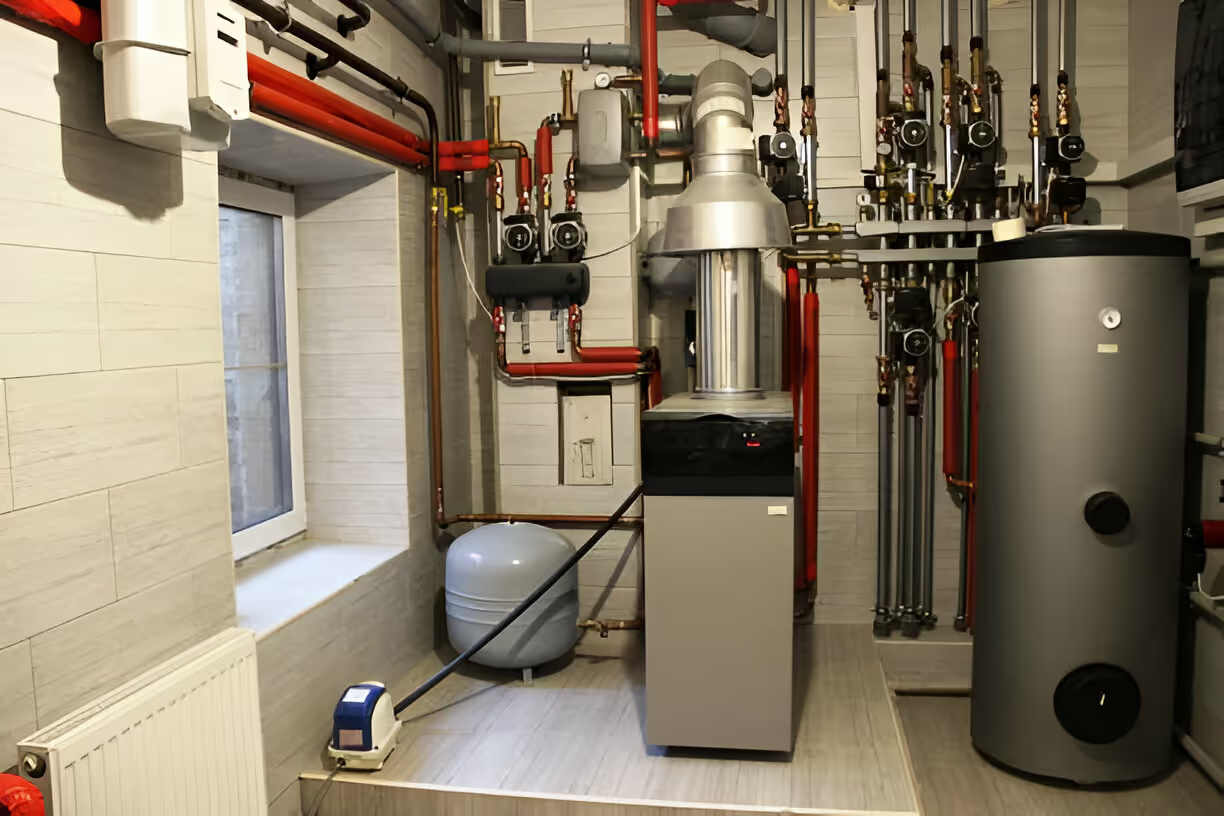Electric Furnaces in Lake Wales, FL


How electric furnaces work
Electric furnaces use electric resistance elements to generate heat, then a blower pushes warmed air through your ductwork. Unlike gas furnaces, there is no combustion, flame, or flue—so installation is simpler in that respect. Electric units convert nearly all incoming electrical energy into heat (close to 100% efficiency at the point of use), but operating cost depends on local electricity rates and the amount of heating needed. In Lake Wales, where heating loads are relatively low compared with northern climates, electric furnaces often offer a straightforward, reliable way to keep living spaces comfortable during cooler nights.
Common electric furnace types and when they make sense
- Cabinet-mounted electric furnaces designed for central duct systems (common for retrofits where a gas furnace isn’t available)
- Cabinet or wall-mounted units for zoned or smaller spaces
- Electric heat strips used as supplemental or emergency heat in systems paired with heat pumps
Electric furnaces suit homes without access to gas lines, properties where low-install disruption is a priority, or situations where heat is only needed intermittently. For year-round energy savings in Florida, homeowners often compare electric furnaces with high-efficiency heat pumps; depending on usage patterns, heat pumps typically cost less to operate.
Sizing and model selection
Proper sizing is critical. A correctly sized electric furnace delivers steady comfort and minimal cycling, while an oversized unit can short-cycle and reduce component life. Sizing should be based on a professional load calculation (Manual J) that accounts for:
- Square footage and ceiling heights
- Insulation levels and window types
- Building orientation and shading (important in Central Florida)
- Air infiltration and occupancy patterns
When choosing a model, consider: blower motor type (variable-speed motors improve comfort and efficiency), cabinet dimensions (for tight closets), compatibility with your thermostat (line-voltage vs. low-voltage), and features like multi-stage heating or integrated air filtration. Because electric furnaces have near-instantaneous thermal efficiency, compare units on blower performance, construction quality, and serviceability rather than AFUE.
Professional installation process
A professional installation typically includes:
- On-site assessment and Manual J load calculation.
- Electrical evaluation to confirm supply capacity (electric furnaces usually require a dedicated 240V circuit and appropriately sized breaker).
- Removal of the old unit and inspection of ductwork; sealing and repair of ducts if needed.
- Placement and secure mounting of the new furnace; proper electrical connections and breaker sizing.
- Thermostat setup and control compatibility testing.
- System startup, combustion-free heat checks, airflow balancing, and a detailed customer explanation of operation and maintenance needs.
Unlike gas furnaces, electric units do not need venting, but electrical safety, correct wiring, and proper airflow remain essential. Professional installers also check for adequate venting of any associated appliances and confirm the home’s electrical panel can handle the additional load.
Expected costs, financing, and warranties
Costs vary by unit size, model, ductwork condition, and electrical upgrades. Expenses include the furnace itself, labor, any required electrical work, and duct repairs or modifications. Because variables are significant, homeowners should plan for a range and request a full equipment and labor estimate based on a site evaluation. Financing options and extended warranties are commonly available through manufacturers or local HVAC providers—plans frequently include multi-year parts and limited labor coverage. Some installers also offer longer-term warranties on workmanship; ask about warranty terms and any available maintenance plans.
Routine maintenance and tune-up plans
Annual maintenance keeps an electric furnace running safely and efficiently. Typical tune-up tasks include:
- Inspecting and testing heating elements and high-limit safety switches
- Cleaning or replacing air filters every 1–3 months depending on use and indoor air quality needs
- Checking blower motor, bearings, and belts for wear
- Tightening electrical connections and verifying voltage and amperage
- Inspecting and sealing ductwork and checking airflow balance
Maintenance plans often offer scheduled seasonal visits and priority service—valuable in Florida when cooling and heating demands change with brief cold snaps.
Common repair diagnostics and troubleshooting
Frequent electric furnace issues in Lake Wales include tripped breakers, faulty heating elements, blower motor problems, limit switch trips, and thermostat malfunctions. Basic homeowner checks before calling a technician:
- Verify breakers are on and no GFCI has tripped.
- Replace or clean the air filter to restore airflow.
- Check thermostat settings and batteries (if applicable).
- Listen for unusual blower noises or rattles.
Do not attempt to service heating elements, wiring, or internal electrical components—those are high-voltage hazards. Professional diagnostics will test element continuity, motor current draw, limit switch operation, and control voltages to identify the root cause.
Energy-efficiency considerations and potential rebates
While electric furnaces are nearly 100% efficient at converting electricity to heat, resistive heating consumes more energy per delivered unit of heat than heat pumps in moderate climates. To maximize efficiency with an electric furnace:
- Use a programmable or smart thermostat for setback scheduling.
- Maintain ductwork to minimize losses.
- Combine with targeted zone control or supplemental radiant options for rarely used areas.
- Choose a unit with an efficient blower motor and good airflow control.
Regarding rebates and incentives: utility programs, manufacturer promotions, and local energy-efficiency initiatives sometimes offer rebates for high-efficiency HVAC upgrades or for installing heat pumps rather than electric resistance systems. Homeowners should review local utility offerings and manufacturer warranty packages for current incentives.
Benefits summary and long-term considerations
For Lake Wales homeowners who need a safe, simple heating solution without gas lines, electric furnaces provide dependable heat with low installation complexity and straightforward maintenance. The most important decisions involve accurate sizing, verifying electrical capacity, and weighing operating costs versus alternatives like heat pumps. Proper maintenance and professional installation will maximize comfort, extend equipment life, and reduce unexpected repairs—especially important in Florida’s climate where heating is intermittent but still essential for comfort on cooler nights.
Service Areas


